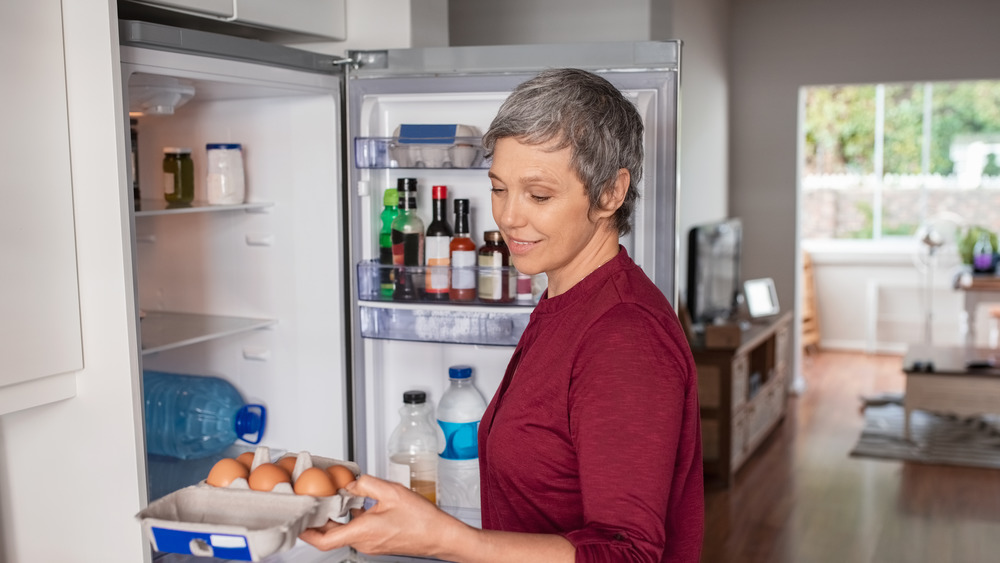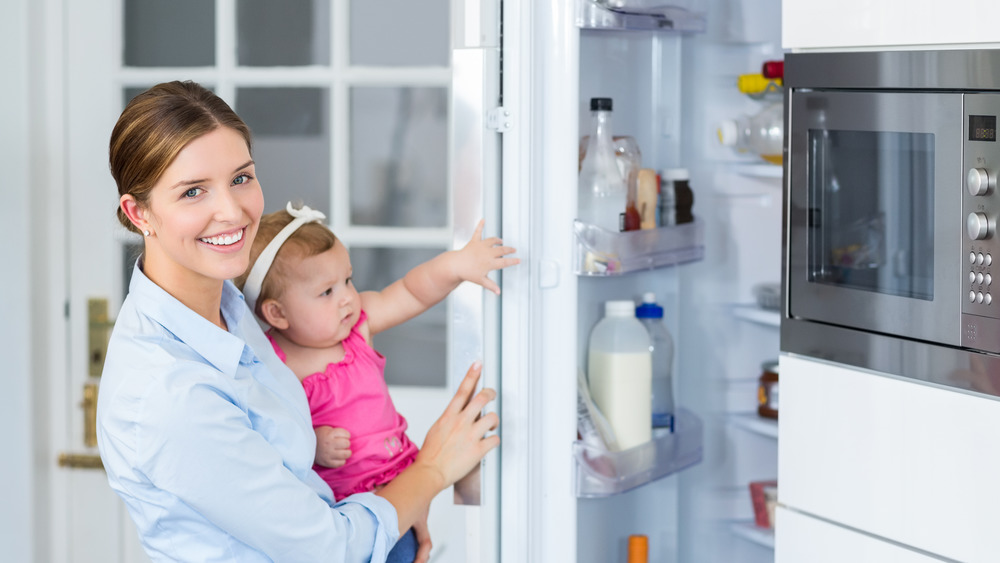Here's How To Pick The Right Temperature For Your Refrigerator
It's happened to all of us: you open the refrigerator and pull out the milk only to find it's half frozen, so you turn up the temperature a little. Solved! Except when you open the door the next day, you find your leftover chicken isn't as chilly as you'd like it to be for safety's sake. This up-and-down game we play with our fridges isn't only frustrating, it can waste food. So what's the ideal temperature for your fridge? Unlike many things that occur in your kitchen like cooking or baking — which leave room for creativity and experimentation — this is actually an exact science.
To keep your food fresh and safe, your refrigerator should always be kept between 35 and 38 degrees fahrenheit. But if your fridge is like ours, there isn't actually a thermometer inside; there's just a knob to turn toward "colder" or "less cold." And even if you do have a temperature gauge inside, they are famously inaccurate and often off by a few degrees. So how do you check to make sure your fridge is being kept at the right temperature? You can actually buy an appliance thermometer at most home stores or online. Once you have one, all you have to do is set it up inside your fridge and let it sit for twenty minutes. Then check the temperature and adjust accordingly (via Real Simple). Now, to keep your fridge at the right temperature, there are a few tricks you can follow.
Tips to keep your fridge cool
First, pull your fridge a few inches away from the wall and leave it there. This prevents the coils and other machinery in the fridge from insulating themselves against the wall and keeping heat in. Basically, you're letting it breathe and cool off. Next, while you have the fridge pulled away from the wall, you could clean out the coils. If your fridge is older, the coils will be near the back; if it's a newer appliance, they'll be across the front on the bottom, behind a grille. Use a vacuum to remove dust, dirt, and build up. Another simple tip? Keep the fridge closed! Try to resist standing in front of the open door, deciding what to snack on. Instead, open and shut the door as efficiently as possible (via kitchn).
What you put in your fridge can greatly affect temperature and efficiency, too. Let warm food cool off before you put it the fridge to preserve it. This makes a big difference; not only will it prevent the fridge from rising in temperature, but it will conserve energy by not forcing the fridge to cool itself down again. Also, a full fridge actually works best; even if you don't have a ton of food, you can fill pitchers of water and place them inside. Not only will this help your fridge regulate its temperature most efficiently, but you'll always have fresh, cool water to drink (via kitchn).

